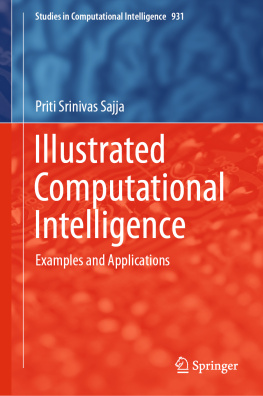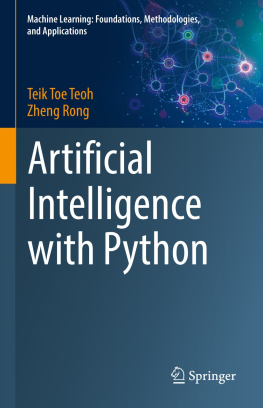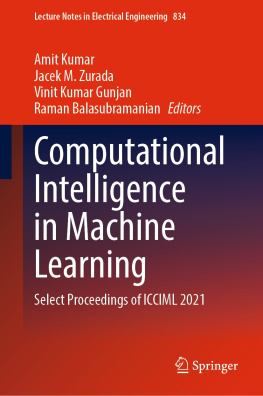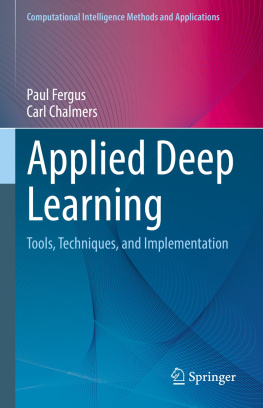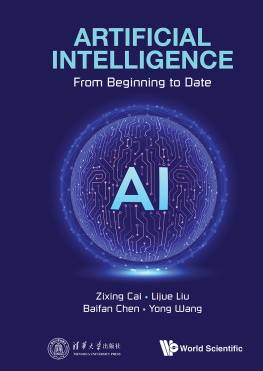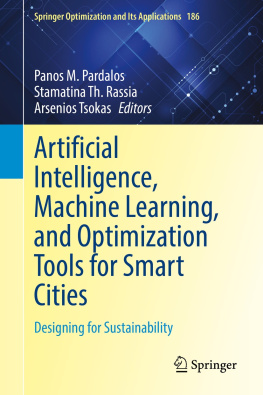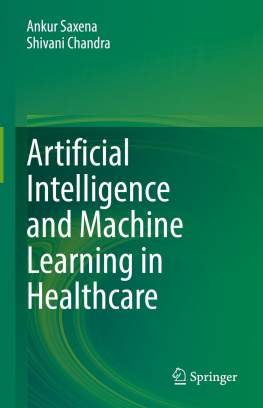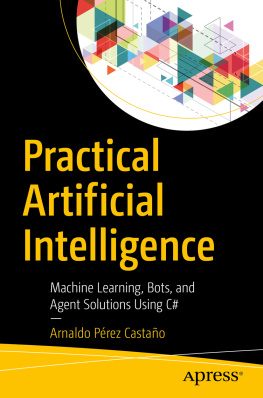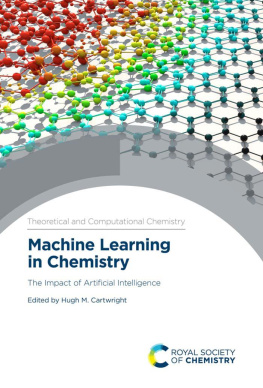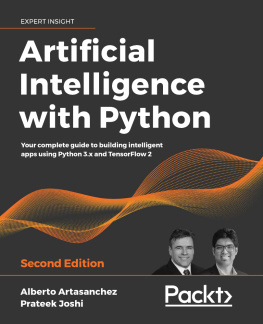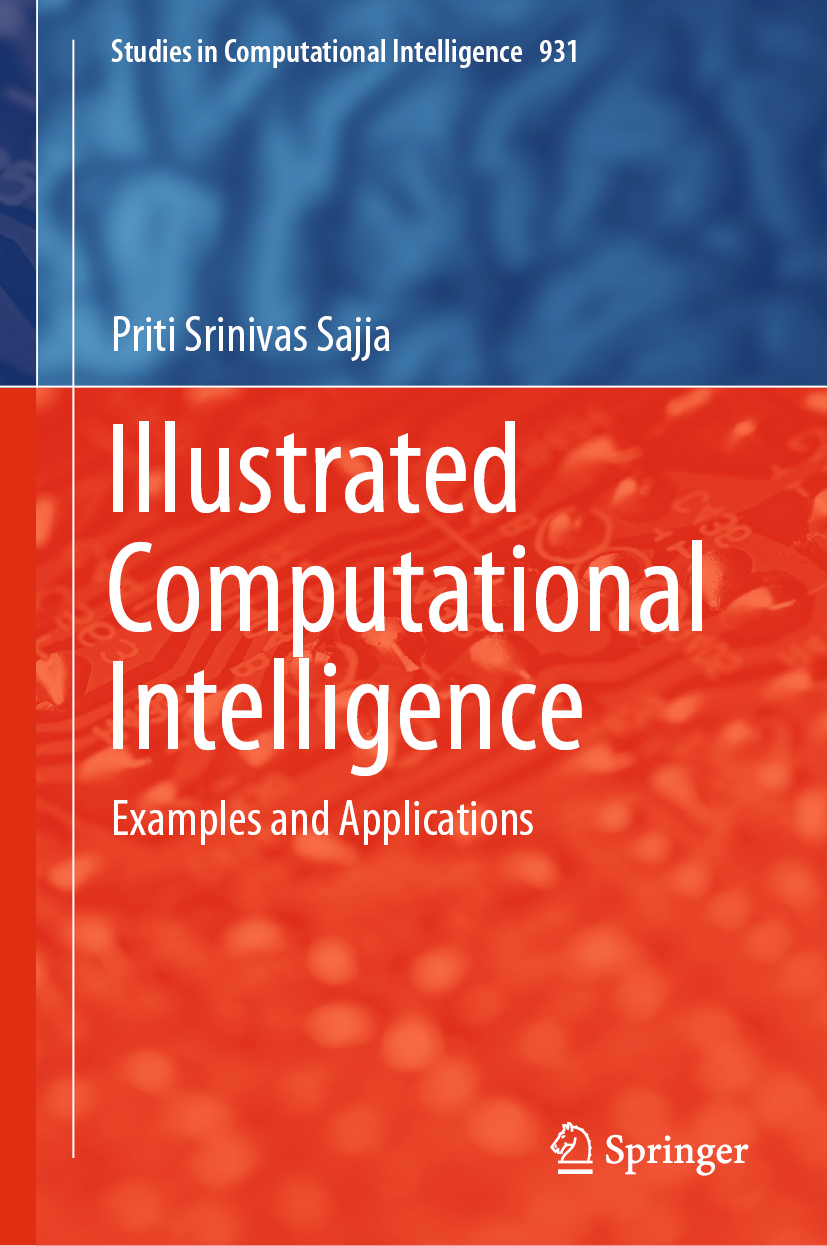Volume 931
Studies in Computational Intelligence
Series Editor
Janusz Kacprzyk
Polish Academy of Sciences, Warsaw, Poland
The series "Studies in Computational Intelligence" (SCI) publishes new developments and advances in the various areas of computational intelligencequickly and with a high quality. The intent is to cover the theory, applications, and design methods of computational intelligence, as embedded in the fields of engineering, computer science, physics and life sciences, as well as the methodologies behind them. The series contains monographs, lecture notes and edited volumes in computational intelligence spanning the areas of neural networks, connectionist systems, genetic algorithms, evolutionary computation, artificial intelligence, cellular automata, self-organizing systems, soft computing, fuzzy systems, and hybrid intelligent systems. Of particular value to both the contributors and the readership are the short publication timeframe and the world-wide distribution, which enable both wide and rapid dissemination of research output.
Indexed by SCOPUS, DBLP, WTI Frankfurt eG, zbMATH, SCImago.
More information about this series at http://www.springer.com/series/7092 All books published in the series are submitted for consideration in Web of Science.
Priti Srinivas Sajja
Illustrated Computational Intelligence
Examples and Applications
1st ed. 2021
Priti Srinivas Sajja
PG Department of Computer Science, Sardar Patel University, Vallabh Vidyanagar, Gujarat, India
ISSN 1860-949X e-ISSN 1860-9503
Studies in Computational Intelligence
ISBN 978-981-15-9588-2 e-ISBN 978-981-15-9589-9
https://doi.org/10.1007/978-981-15-9589-9
The Editor(s) (if applicable) and The Author(s), under exclusive license to Springer Nature Singapore Pte Ltd. 2021
This work is subject to copyright. All rights are solely and exclusively licensed by the Publisher, whether the whole or part of the material is concerned, specifically the rights of translation, reprinting, reuse of illustrations, recitation, broadcasting, reproduction on microfilms or in any other physical way, and transmission or information storage and retrieval, electronic adaptation, computer software, or by similar or dissimilar methodology now known or hereafter developed.
The use of general descriptive names, registered names, trademarks, service marks, etc. in this publication does not imply, even in the absence of a specific statement, that such names are exempt from the relevant protective laws and regulations and therefore free for general use.
The publisher, the authors and the editors are safe to assume that the advice and information in this book are believed to be true and accurate at the date of publication. Neither the publisher nor the authors or the editors give a warranty, expressed or implied, with respect to the material contained herein or for any errors or omissions that may have been made. The publisher remains neutral with regard to jurisdictional claims in published maps and institutional affiliations.
This Springer imprint is published by the registered company Springer Nature Singapore Pte Ltd.
The registered company address is: 152 Beach Road, #21-01/04 Gateway East, Singapore 189721, Singapore
To My Parents
Preface
Artificial Intelligence (AI) and Machine Learning (ML) have become essential instruments in the modern era, which are ubiquitously applied to get the benefits of human-like intelligence. Applications of these techniques have been always challenging and appealing simultaneously. This book entitled Illustrated Computational Intelligence: Examples and Applications presents a summary of necessary classical artificial intelligence and machine learning techniques in brief in its initial two chapters while the remaining chapters presents hundreds of illustrated examples and applications from real life on various constituent techniques. These techniques include fuzzy logic, artificial neural network, genetic algorithm, and their possible hybridizations. Chapters of the book present illustrations, examples, and applications on these techniques.
Significant effort is taken to minimize the fundamental and background concepts that are available otherwise, and focus is on the illustrated examples and applications with complete details. Simultaneously, care is also taken that no fundamental and important concept is left without discussion. This makes the book complete, and the readers need not have to refer elsewhere for the preliminary but trivial background concepts, which are necessary.
This non-talkative and illustrative book on computational intelligence is meant for computer professionals as well as non-computer professionals, as the application of artificial intelligence has always been ubiquitous in nature. Students and instructors at the graduate level, postgraduate level, and diploma level on national and international platforms can use this book for practising computational intelligence.
The solved examples demonstrated in the book will be a great help to instructors, students, nonAI professionals, and researchers. It is to be noted that every example is discussed in detail with normalization, architecture, detailed design, process flow, encoding, and sample input/output. Summary of the fundamental concepts with illustrated examples makes this book unique in its category. Some examples which are described in this book are webpages' classification, sales prediction, matrimonial, and others like job profile matching, emotion detection, diagnosis of flu and viral fever such as COVID-19 in four different ways with neural network, fuzzy logic, genetic algorithm, and neuro-fuzzy systems, and also eight queens chess problem, knapsack problem, k-means solutions, collaborative filtering, image classification through the fuzzy convolutional network, fuzzy movie recommendations, fruits and dry fruits grading, identification/sorting, etc., using various computational intelligence techniques such as neural network, genetic algorithms, fuzzy logic, and their various hybridizations.
Another salient feature of the book is the list of core and applied project ideas and future research possibilities in various domains using computation intelligence. Every technique of artificial intelligence and machine learning is divided into the core (pure) research area and the applied research area, and a list of applications and innovative research ideas for the technique are listed in every chapter. Every chapter enlists at least 40 research possibilities and applications besides the solved examples. Within the six chapters, about 215 illustrations and hundreds of examples, applications, project ideas, and research possibilities are presented.
I take this opportunity to extend my thanks to the Almighty for bestowing me with health and determination to write this book. The project kept my morals high during these testing times amidst a world pandemic. I found a purpose to occupy myself as lives around me changed drastically for the worse due to the COVID-19. I am also indebted to Dr. Loy DSilva, Ms. Suvira Srivastava, Ms. Raghavy Krishnan, and Mr. Gaurishankar Ayyappa for their continued support in the process of publishing this book. I am grateful to my extended family of students and colleagues at the Department of Computer Science, Sardar Patel University, Gujarat, India for their help. I also thank my family for blessings, unconditional love, and encouragement.

